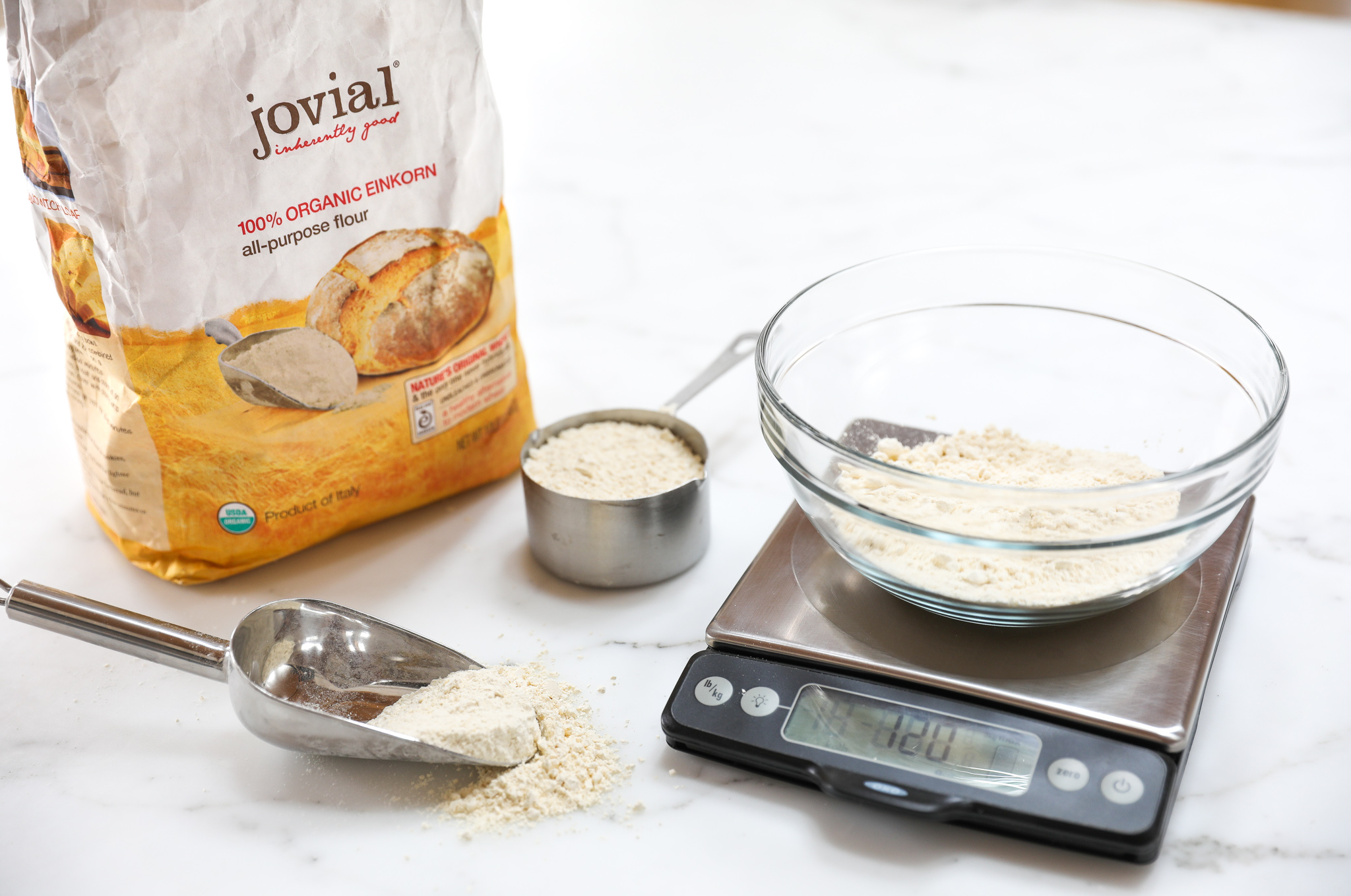Baking With A Kitchen Scale In Grams

Grams Vs Cups: Which Is More Accurate?
My cooking classes at jovial’s Culinary Getaways always begin with the same question- How many of you bake with a kitchen scale? The same response repeats itself year after year, when only a few people raise their hand to affirm. I totally understand how foreign it might be to weigh baking ingredients in grams with a scale, instead of utilizing cups to measure ingredients. After all, we are American and that is the way we are accustomed to baking. A quarter of a cup of flour sounds familiar, while 30 grams does not. I understand! I have lived in Italy for 25 years and I still set the temperature in my car to Fahrenheit because I have given up on the idea that I will someday feel comfortable with Celsius temperatures. However, with baking, there really is no better way, and it is something that you can get used to pretty quickly.
I recently ran across a statement on the FDA food labeling website:
Using a volume measure rather than a weight measurement for total fat, carbohydrate, sugars, added sugars, and protein would provide inaccurate information. The gram is a measure of mass or weight while a teaspoon is a measure of volume.
That makes sense. In European baking, liquids are often listed as ml in recipes and measured by volume, while ingredients like flour and sugar are listed by weight in grams. We measure liquids and solids with volume measurements, and that is not optimal.
Why Grams & Not Ounces?
One ounce equals 28 grams, so measuring in smaller increments will always improve your accuracy. And why not cups? To properly measure flour in cups, you should spoon the flour into a cup and not compress it. That’s a time-consuming method that will never really give you as accurate a result as using a scale and grams. In my cookbook and in the recipes on the jovial site, we always list ingredients in both grams and cups because we don’t want to exclude the majority of you, who we know are baking without a scale. However, when people contact us with problems with recipes, our recommendation of utilizing a scale almost always clears up the issues.
The baking we do at jovial is different because the consistencies and textures of einkorn and gluten free batters and dough are not the same as those made with regular wheat. I often speak to guests on the first day of classes at the getaway, and they say their bread is not coming out like mine. As the week evolves, they get accustomed to the scale and confirm they were adding too much flour. Adding too much flour will make both your gluten free and einkorn bread, muffins, cakes and cookies come out less-than-perfect, especially bread.
One great thing about using a scale is that you can set your mixing bowl on the scale, measure your first ingredient, press tare to zero out the weight, then weigh the next. This definitely saves on many dirty bowls and cups, making clean up much quicker.
What should you purchase? We do not prefer any particular brand, but we would definitely get a digital scale as opposed to a mechanical scale. We are currently using an OXO scale in our test kitchen, which costs about $50. I really want your recipes to turn out exactly like mine, so if you haven’t purchased a scale yet, please, consider it.
Thanks,
![]()






1 Comment